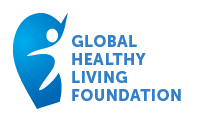"Black history is not confined to a single month; the same goes for health equity — it is a continuous narrative that should be woven into the fabric of our health care systems year-round." — Michelle Walters-Johnson, patient advocate
Health Insurance: Ways to Pay
Health Insurance: Ways to Pay
DIFFERENT WAYS TO HELP PAY FOR YOUR OUT-OF-POCKET COSTS
If you have a private insurance plan, there are several ways that you can find financial assistance to help cover your out-of-pocket costs:
Health Savings Account (HSA):
This is a benefit for employees that can ONLY be paired with High Deductible Health Plans (HDHP). Having an HSA will help you pay for your deductible and other out-of-pocket eligible costs using tax-free dollars (this means that you are not taxed on this money through your income).
It is up to you how much money you want to set aside to put in your HSA, but there is a yearly IRS set limit. The 2018 limit is $3,450 but this amount can change every year. If a year goes by and you do not spend everything in your HSA account, the money you have in the account will roll over to the next year. There is no “use it or lose it” feature.
Health Reimbursement Account (HRA):
This is a benefit for employees that can be used with any type of health insurance plan. It is an arrangement that your employer may offer and will help you pay for your deductible and other out-of-pocket medical costs using tax-free dollars (this means that you are not taxed on this money through your income).
The employer determines this benefit, puts tax-free money into your account, and establishes a limit. If you have an HRA, your employer will either fund the account or reimburse you with a fixed amount of tax-free dollars for eligible medical expenses after you meet your deductible.
Flexible Spending Account (FSA):
This is a benefit for employees that can be used with any type of health insurance plan. However, you cannot have both an FSA and an HSA at the same time. Having an FSA will help you pay for your deductible and other out-of-pocket eligible costs using tax-free dollars (this means that you are not taxed on this money through your income).
It is up to you to know how much money you want to set aside to put in your FSA, but there is a yearly IRS set limit. The 2018 limit is $2,650 but this amount can change every year. If you do not use up all of the funds by the end of the year, you will lose this leftover money. There is a “use it or lose it” feature with FSAs.
Copay Card Assistance Programs:
These cards allow eligible patients to receive savings on their prescription out-of-pocket costs such as copayments and deductibles. They are similar to coupons but for people who qualify. These are only available to commercial insurance.
There are various types of assistance programs:
-
Patient Assistance Programs (PAPs) – Programs run by manufacturers that offer free medicine to qualifying patients facing financial difficulties. This is generally needs-based
-
Co-Pay Foundations – Independently run foundations. Donations may be made by manufacturers but the law is clear that the donations cannot have any influence over what drug is given to patients. (Used a lot by Medicare patients)
-
Co-Pay Cards/Coupons – Generally run by manufacturers to help patients pay towards their co-pay/deductible. Generally not needs-based.
-
For more information about how these apply in everyday life read this article.
Third Party Payments
Third party payments are payments made by private and non-profit entities to assistant patients with insurance premium costs. These are different from copay cards or coupons which are designed to help cover a patient’s out-of-pocket drug costs.
Was this article helpful?
YesNo








